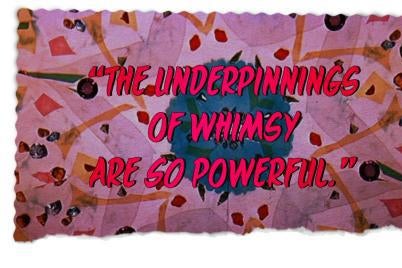This article is part of Postcards from Camp, a multi-part series on the nature and contemporary relevance of camp sensibility. Read all of the entries here.
As we come to the end of this stack of postcards from camp, I leave you with a set of valedictions (I am terrible at goodbyes). What they portend for camp—whether an invitation to a revivified correspondence with our culture or a final sigh before the shovels start in—remains to be seen.
See you soon,
The great injustice included in all the recent gloating and grieving over camp’s supposed demise is that we almost never get to hear from those who choose instead to hang out on the hill above the gravesite, critiquing the fashions of the attendees below. Philip Core, a painter and one of my favorite theorists of camp and the campy, is one of those guys. He recognized that while the uses of camp may change with the times, it could never “die” outright. “What is reassuring,” Core writes, “is that camp will re-emerge. Indefinable, unshakable, it is the heroism of people not called upon to be heroes … Camp is always in the future; that is why the present needs it so badly.”
Focus on that last line. By allowing for fleeting evasions of the implicit doxas of the time—from the WASP-ish conformity of midcentury America in Auntie Mame to the social injustices of the 1980s in Paris is Burning—camp is always looking forward, gently hinting at a time yet to come when things might be, if not perfect, at least otherwise. And that kind of glimpse, no matter how brief, is the first step toward actual change. In the end, it is camp’s rare combination of respite and reflection that should keep it relevant, for there will always be paradigms to outplay and systems to baffle. As gays, camp’s most recent champions, disperse into the mainstream, other people will surely rise up to become its heroes, and they will use it to make art—and remake life—for purposes we can’t yet imagine.
The truth may be that camp cannot die because it is just a tool; and tools, no matter how long they’ve been sitting on a shelf, are not dead. They’re merely waiting for someone to pick them up.
Best wishes,
Back in the 1950s, when my septuagenarian drag queen friend Jack was young, he used camp to shimmy away from the culturally prevailing notion that men should only dress like men. He put on heavy black eyeliner, heavier sparkling earrings, an even heavier bird’s nest of a wig, and called himself Flawless Sabrina. She then helped other men make the same fantastic transformation, organizing them into the first national drag competition circuit this country had ever seen. As it turned out, gender was a dangerous paradigm to parry with; because people tend to hide away what they find confusing, its bafflement landed Jack in jail many times. (Clearly, camp’s powers of escape work better on ideological walls than those made from concrete.) But the game was ultimately worth it. If nothing else, it got a movie made about them.
Over a glass of cheap white wine in her richly inhabited Fifth Ave apartment, Flawless once told me this: “The underpinnings of whimsy are so powerful.”
Sincerely,
Another title I had considered for this closing essay was “Goodbye Campy, Hello Camp.” I wanted to reiterate the distinction I tried to make near the beginning of the series between campiness as an aesthetic style (“art so bad it’s good”) and camp as a practice, as a full-blown way of engaging with the world. Campy may be on the way out (or even long gone), I admitted, but camp is still very much around. It’s just misunderstood and underemployed.
One of the reasons this distinction is so important is that, for those of us who are too gauche for reverence and turned off by hipster irony, camp offers a way to be serious without looking a fool. Campiness never really offered this, and indeed, as it became more and more mixed up with mass culture over the decades, it increasingly took on the dull edge of the irony with which it is now so often lumped. But camp is ultimately sincere, intensely so—sincere in its commitment to nuance and play, to the valuing of reception over intention, and ultimately, to the thwarting of the paradigms that would limit us.
That’s an ethics that suits me. Maybe it does you, too.
Warmly,
Isherwood, in his diaries: “… camp is happiness.”
Yours truly,
The point? Camp is, or at least may be, yours. Truly! All you have to do is take it up. This series has been more description than prescription, but a closing bit of encouragement:
Don’t be afraid to veer (“recklessly,” Wayne Koestenbaum suggests, and without signaling) off the main highways of culture and onto those weird “frontage” roads that amble and dip and disappear and emerge on the periphery. That’s where camp is. That’s the wonderful, harrowing point from which you can view life in enough remove to notice its codes, its nuances, be they terrible or beautiful.
To be sure, a commitment to taking the scenic route can lead you to some strange, out-of-the-way places, but isn’t the lack of guardrails and lane-barriers worth it? Auntie Mame, Fancy, Chablis, and the rest of my friends and I can’t abide those kinds of limits on experience, so if you need us, we’ll be out here traipsing from campground to campground, on the lookout for nuance wherever it may be found. I hope you’ll decide to join us—if you do, bon voyage, happy hunting, and, if you find a spare minute, send me a postcard.
